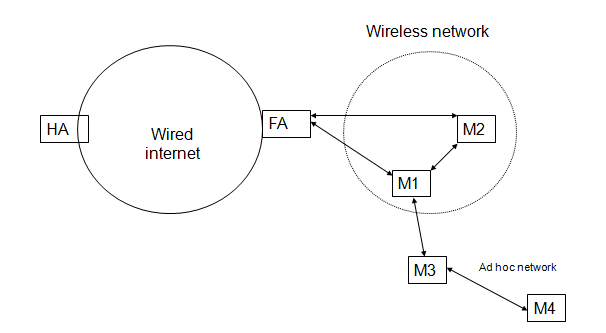Behavior of TCP over CBR
In general User Datagram protocol (UDP) is the widely accepted protocol to handle the high Constant Bit Rate transmission that was required to transmit data like video or audio. But there are few limitations in the usage of UDP to support the CBR due to the firewalls and thus a limited connectivity is achieved. There has been a wide research done on the alternative protocols to handle the CBR and Skype the famous VOIP application could mark its success in using the TCP across CBR.
These days TCP has improved a lot in terms of loss recovery mechanisms like SACK and thus transport based on TCP can be used to handle the real-time CBR workloads. Due to the increase of mobile and multimedia applications, always a new set of Quality of Service Standards are set and most of the existing wireless routing protocols are supporting these QoS services and they are proved to failure in case of mobile environments like MANETS. To meet the basic requirements of mobile multimedia requirements a separate set of QoS standards are always required and the constant bit rate of transmission stands on first among the requirements.
Energy consumption across the MANETs to support the multimedia services would be high and in these conditions TCP is proved to be a victim of error correlation. There are many attempts proposed to improve the energy efficiency of TCP over achieving CBR across the MANETs and most of them concentrate on the error control mechanisms .
Block diagram of MANET is as shown below
AODV can be considered as the hop-by-hop routing protocol as they maintain the route information for some predetermined lifetime and it would be around 3 seconds across AODV routing protocol. In general a route entry is maintained for a constant time period even the usage of that particular entry is out of scope at a given point of time. It is always advantageous to maintain a short life time for a route entry across the dynamic routing protocols like AODV for MANETs.
In most of the cases the life time is determined by period of Constant Bit Rate (CBR). If the period of CBR is sufficiently long, then there is no proper requirement to maintain the route and node information and it is simply wastage of computation and as a result the overall overhead of the network will be increased. It is always advisable to update the routing table in prior to the generation of CBR data. In static environments, the life time of each node is set to the CBR period and this might not work for the dynamic environments like MANETS, where the mobility of nodes decides the actual performance of the network.
In general the CBR period of each and every node should be set dynamically across the AODV routing protocol. Whenever the AODV protocol sends a RREQ message to the other nodes a separate CBR period field is added to the message and broadcasted across the network. Once the message reaches the desired destination, the destination nodes fetches the CBR period field from the RREQ message and adds a new CBR period filed to the RREP message and sends back to the actual source.
Thus each node created a new life time based on the CBR period of the message and based on this life time the node or route entry is expired and thus the overhead to the system is reduced a lot. Control overhead messages can be reduced a lot with the implementation of dynamic CBR period field in the RREQ and RREP messages that were broadcasted by the AODV routing protocol across MANETs .
This paper is written and submitted by Sujana Priya V

